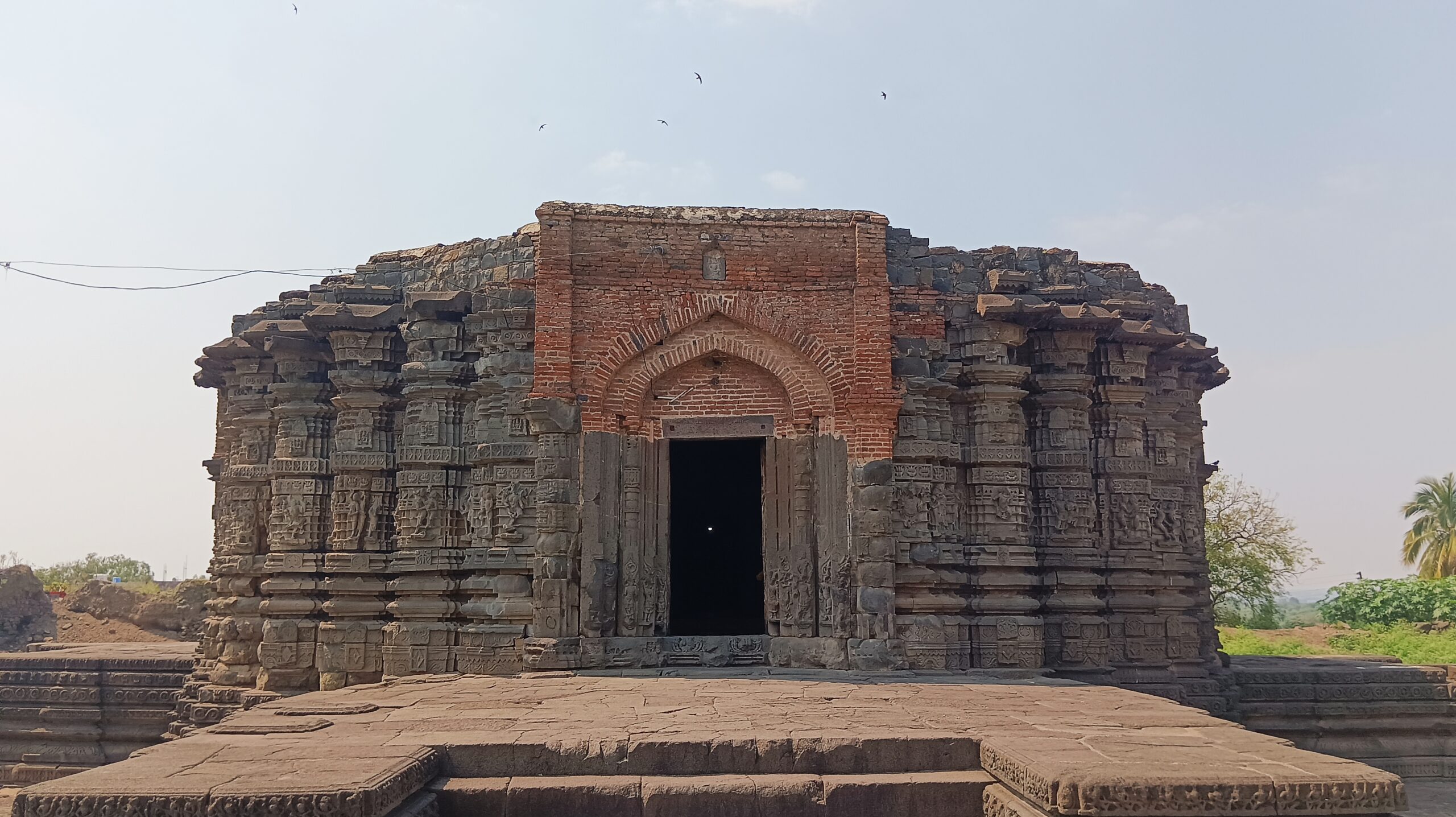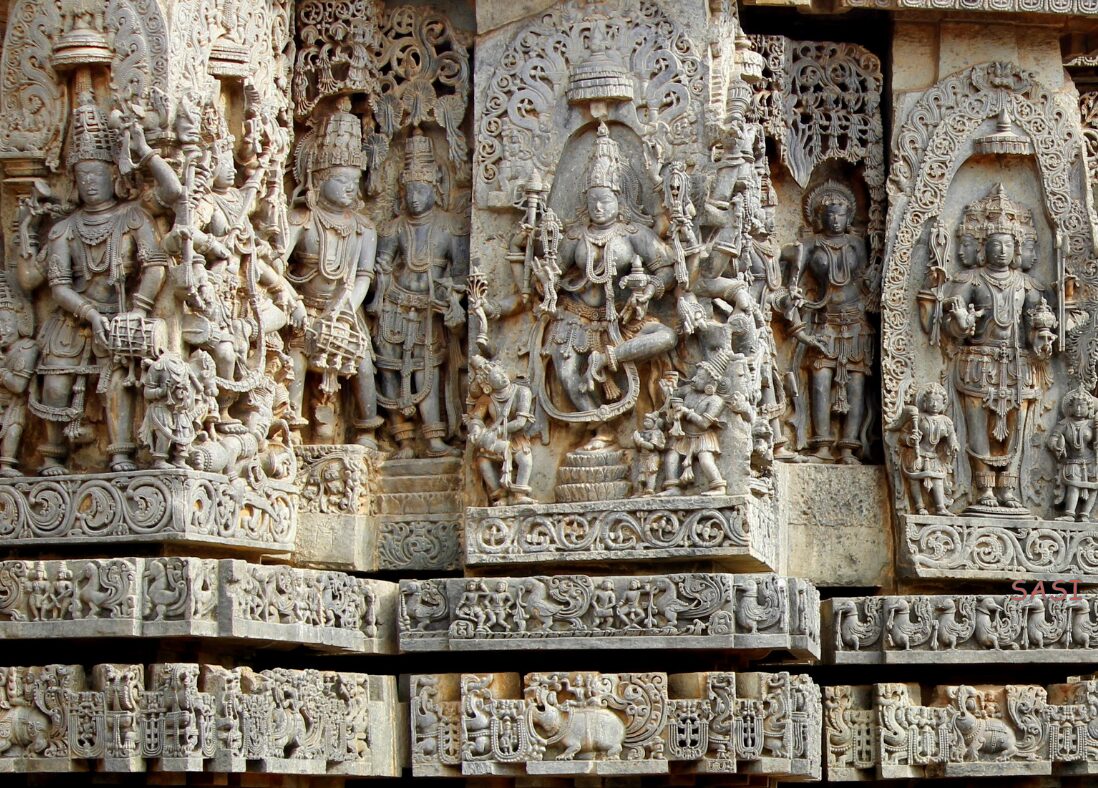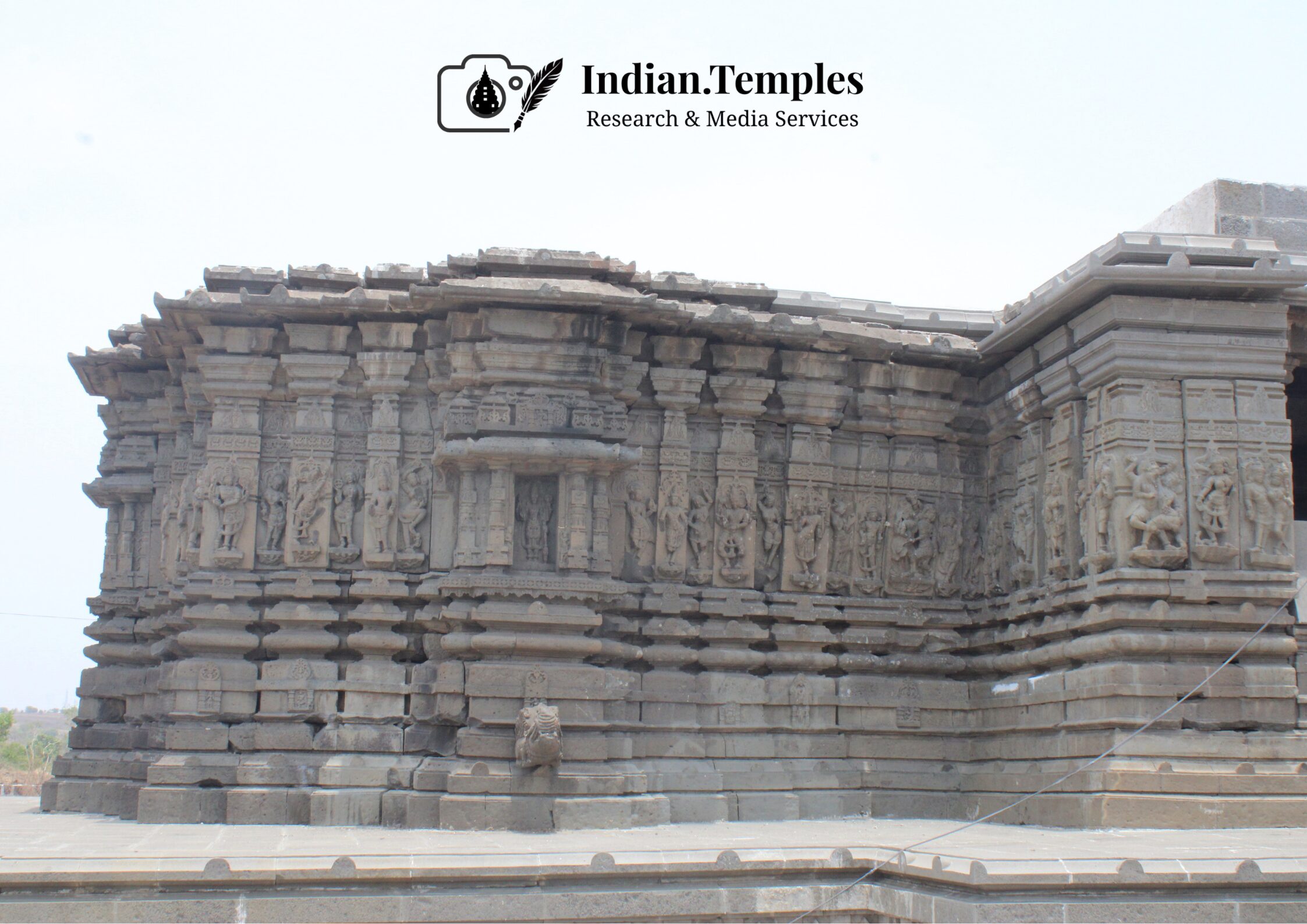
The God of Protection & Preservation, Lord Vishnu has his own one Thousand names, having separate stories to each. The Garuda Purana consists his thousand nouns under the title of “VishnuSahastranamStotram”. Narayan, Jaggannath, Hari, Padmanabha are famous among them. The meaning of the term “VishnuSahastranamStotram” Is Vishnu means Lord Vishnu, Sahastra means Thousands, Nam- Names & Stotram meas verses of Stotra or Shloka.
There is a Naam or noun of Vishnu among Thousands, Daityasudan meaning the destroyer of the Daitya or Asura. And a beautiful temple in Lonar (Maharashtra) is dedicated to this particular form of Vishnu.
So, who was the Daityasudan? What he Did? Is he Vishnu or Demon ? etc. The answer of all these questions or other, will get, when we come to know about the background of Daityasudan. Vishnu took the form of Daityasudan to rescue humans & gods from the demon Lonasur. As mentioned above, there is story regarding Daityasudan.
Once upon a time, a demon, Lonasur or Lovanasur resided in the area of Lonar (A Village in Buldhana District of Maharashtra, Famous Lonar Creator). Author of the presenting story, suggests that the creator at lonar was the hiding place of Lonasur. He had a sister. As a demon he became a threat to local communities and gods also. He challenged gods. His destructive activities and arrogance led locals and gods to appeal to Lord Vishnu. Hence, Lord Vishnu took the form of a handsome young boy named Daityasudan and found his hiding place with the help of Lonasur’s sister. As Daityasudan, Vishnu killed demon Lonasur. Fresh water of lake or creator became saline after mixing up Lonasur’s blood into water.
This story told by locals and others. There are several temples around the lake dedicated to various gods & goddess e.g. Shiva, Parvati, Jaagdamba, Raam-Sita- Lakshaman, Hanuman etc. A temple dedicated to lord Vishnu, dated back to the c.13th century CE (May be more). The temple is known as Daityasudan temple. Scattered ruins of this temple show a very different architectural plan from the present one.
The present Temple dates back to the 11th century CE built by a Chalukya king Vikramaditya.

The temple is divided into Three sections by architects. The Sabhamandap or assembly hall is in the form of Gudhamandapa along with one Mukha Mandapa & two Ardhamandapa. Other sections are like other temples, Antarala and Garbhagriha (Garbhagruha). The main entrance of the temple on the East. Hence, it is consider as a Eastward Temple, has Garudamandapa in front of Eastern Entrance. The Garudamandapa is in poor state, other two entrances on the North and South. All These three Pravesha Dwaras or entry gates have five shakhas with beautiful carvings of deities at the bottom, upper section of Dwarshakhas is simple and plain. Chandrashila also depicted here. On the top of the main entrance, we can see here a baked bricks structure. Praveshdwaras have Arches on top. The entire shape of temple is Asymmetrical star, exterior wall is full of carvings of sculpture of Deities, Celestial nymphs, Animals, Symbols etc.
As stated before the assembly Hall is a Gudhamandapa, but today it is repaired by Bricks in Islamic Architecture. In the middle, raised a Rangashila (a little bit raised platform for performing religious activities such as bhajan, kirtan, dance etc.) measures around 10 X 10 feets in square shape. The Antarala and Assembly Hall is divided by a Door or Dwara similar to the main entrance but has beautiful carvings.
Vitaana of Antarala and Garbhagriha seems to be similar. There, sculptures relating to Kansa & Krishna, Krishna Raaslila, Narsimha, Death scene of Lonasur carved out. The Sanctum Sanctorum, it’s entrance gate is the same as antarala’s entrance gate a little bit.
Animals at the bottom and Torans can be seen. Chandrashila, like lotus pilates can be seen here. The remains & marks show that the original temple had many beautifully carved pillars inside. But today, they are completely demolished & invisible.
Exterior wall of the temple has several sculptures of various scenes and themes. Main themes are Battle, Dance, Worship, Celestial Beauty, Sexuality, Devotion, Great Personality etc. First of all we need to know about the foundation or base of the temple from bottom to top.

The foundation or Pitha or Adhisthana of the temple has Seven Layers or Bands (Thara). These Bands show similarities with Sun Temples in all over India, specially at Konark. Layers from bottom –
1)Geometric Design of flowers. Some kinds of flowers are carved into square shapes.
2)Jaadamba or Padma thara (Band of lotus). It has carvings like lotus pilates wide and large.
3)Third band is known as Kani. It depicts footprints of Cows or Bullocks.
4)Band of Swan or Goose.
5)Buds of Lotus.
6)Kirimukha Thara &
7)Nar thara depicting various battle scenes.
Then this foundation & main temple’s wall formed Vedibandha & Mandovara. It has several layers like Manchi, Kapota, Kumbha, Kalasha Etc. The Mandovara or wall temple is “Ekjanghaa”(Only one panel of sculptures). They are based on Gods, Goddesses, god-goddesses, Celestial Nymphs, Yakshas-Yakshis, Anthropomorphic Figurines etc. It shows the evidence of effluence of Khajuraho, Pattadakal temple on it. found here. Some famous sculptures.
There are more than 200 carved Figures or Sculputers (solo Countation). Some of them I tried to describe here (Without Catalogue).
●ten incarnations of Vishnu. These are seen at various locations on the Mondovara. Specially Varah, Krishna, Rama depicting mostly.
●dancing Figures of Womens. Sometimes in group, mostly two womens, sometimes solo. Some Dancing figures have three individuals, one with musical instruments (Drum or Dholki) and two engaged in Dancing.
●several erotic sculptures are found on the Mandovara. These sculptures are broken and in very poor condition, therefore, they are a reminder of the ancient Indian Grandeur at Khajuraho. Some sculptures are trying to elaborate lasbian relationship. Beside them, some figures are of Couples who engaged in their World of Love.
●few sculptures showing a woman figure killing an Asura (Anthropomorphic Demon) with her sword. Maybe, they could be Goddesses.
●several sculptures having a scene of punishment to one by someone. They could be Goods or great personalities, who punished Demons & evil mentality.
●most significant sculptures of this temple is, Ram-Sita sculpture. It seen on the North wall. Lord Raama stand in the mid and Sita on his left and Laxmana on his right. All they are standing in ‘Tribhanga’ (body bent at three places) pose.
●another one figurine is, Radha-Krishna. Krishna holding Sudarshana in his upper right hand, other hands are broken, thus it is hard to identify, but as per norms, usually, Krishna holds Conch, Sudarshana, Musal, and one hand in Abhay Mudra or sometimes in Varada mudra (here mudra means position of hand). He stands in Tribhanga posture, on his left Radha standing the same as Krishna, in Tribhanga pose, looking at his face, holding a lotus in her left hand.

Temple has three Niches or small shrines attached to Mandovara. Southern niche has sculpture of Chamunda devi, has four hands but all are broken now, wearing a chain of small skulls around her neck and forehead. The Sun God, Suryadeva in Indian languages, took place in Western niche. Sun flowers are seen behind him, his swords, Gandharwas etc as well . Northern niche has a sculpture of Narsimha, a general and regular depiction on killing the demon.
Beside them there are several sculptures which are enormous, tremendous & have soul in them. The main sculpture, Idol of Vishnu means Daityasudan, four handed, lower right hand holding a Mace, Wheel or Sudarshana in upper right, Conch in his upper left and lower left, may be in Varada Mudra, he stand on the belly of demon Lonasur, Demon requesting to the god to leave him. This is the a new idol, from Bhonsales of Nagpur. Original one was, maybe be demolished.
There is one more temple in the South-East direction with Mukhamandapa & Assembly Hall. Mukhamandapa & Assembly Hall have beautiful carved pillars. This temple is without garbhagriha, hence, a middle portion of the southern wall is used as a place of garbhagriha. This temple was built for the trinity of Hinduism- Brahma, Vishnu & Shiva. Their vehicles are seen at the bottom panel. Here, a sculpture of Garuda took place instead of Shiva (it may have been placed by locals).
Fragments & remains, leads scholars to create their opinion. Some Said, the temple was not complete but some said, it was destroyed by invaders trying to convert into Islamic religion. The Bricks is the indication of this statement.
Besides the controversy, we need to protect our heritage as a citizen of our country, as a human. These temples are the identity proofs of ancient Indian cultural life. Hence, we have to come forward to conserve & preserve our cultural heritage.
Akshay Sawant is a student of Archaeology with interests in Prehistoric Studies, Ancient Cultural History and Art-Architecture of ancient India. He is from Aurangabad, the city in Maharashtra commonly termed as tourism capital of Maharashtra.













